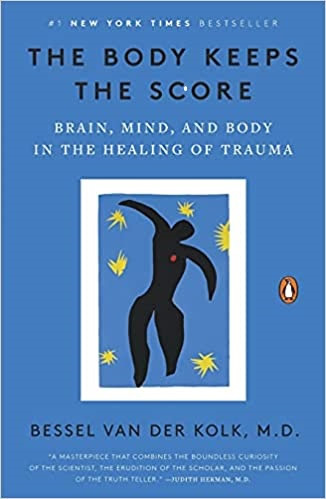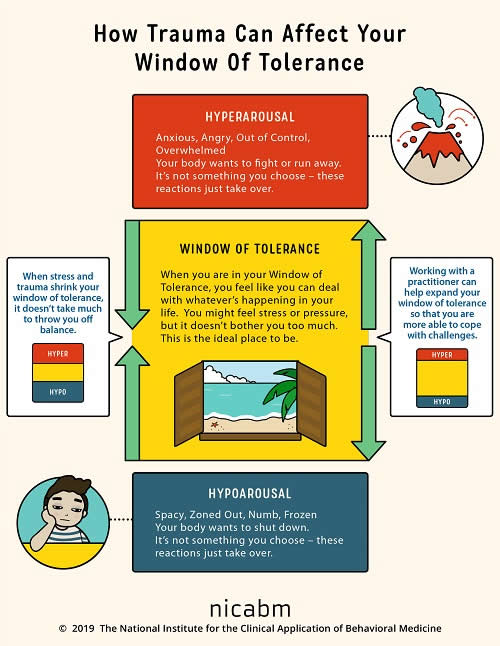Positive Health Online
Your Country

Trauma – When Emotion and Energy Get Stuck in the Body
listed in bodywork, originally published in issue 275 - January 2022
Continuing the theme from our previous article on emotion in the body, in this article we’re going to look at the ways in which emotion gets stuck in our bodies, changing our physiology of a tissue fluid and energetic level. The changes take place in response to overwhelm and trauma. We’ll also look at how you might notice these patterns in your clients and some advice on how best to prepare yourself and respond to clients who may have experienced trauma.

What is Trauma?
According to a NCBI study of a combined sample of 68,894 adult respondents across six continents, over 70% of respondents reported a traumatic event.[i] The reality is experiencing the unexpected death of a loved one, being mugged, being in a life-threatening automobile accident occurs to many of us. The good news, humans are deeply resilient, and we are all hard-wired to survive, and overcome trauma, however life is not as easy to navigate or as fun when we are carrying with us patterns of trauma. The root to healing trauma is found in the body, and as bodyworkers, we are well placed to help our clients connect to, and develop more awareness of their bodies, and begin their journey of healing and feeling safe in their own skin again.
The simplest and most inclusive definition of trauma is an event that overwhelms us and causes an unresolved impact.[1,2] Essentially, when we experience trauma, our whole body responds to stress. When the reptilian (instinctual) brain takes over it partially shuts down our conscious mind engaging the urge to fight, flee, or in some cases, freeze. Blood, oxygen and sugars are diverted to the large muscles of the body to aid us in this response. All of this happens instantaneously, and in many cases the energy mobilized is discharged because we are able to act appropriately (fight or flee) in response to the threat. Sometimes, however, we are unable to respond to the threat, and therefore unable to discharge the energy that the body has released to facilitate a response. For example, if we have been trapped (in a car crash), held down (even ‘in jest’) or prevented from acting (societal norms) to protect or defend ourselves, the brain continues secreting stress chemicals triggering our body to respond to a threat or situation that is no longer happening. In this situation, the energy and emotion associated with the trauma has no way to be discharged and symptoms begin to arise. Essentially, being able to move or fight to protect yourself is likely to affect how you will respond long-term to a trauma that you have experienced.[2,3]
What to Look Out for in Clients who May Have Experienced Trauma
Clients may not always tell you what has happened to them, experiences may be pre-verbal (in utero or the first few years of life, therefore no words to explain the experience); however the body sensations are there. In some cases, clients may not perceive the overwhelming incident to be a trauma “oh that always happens” or “it wasn’t that bad”. There are however certain clues in the behaviour of clients that may alert you to the possibility that they have experienced some trauma. Clients may appear hyper-vigilant (on edge), or very distant, finding it difficult to stay present. They may express that they feel as though they are outside of their body or may lose connection with a specific body part. They may feel as though specific body parts are far away or lose the sense of where the body is in space. Clients who have experienced trauma may present with laboured breathing, chronic unexplained illness or suffer from racing thoughts that may interfere with daily life as well as sleeping. During treatment, clients who have experienced trauma may also make sudden jerky movements, or begin trembling and shaking, it is important to normalize this for them “that’s ok, let that movement pass through the system”. Hypervigilance – enhanced sensitivity to sensations and the environment – following exposure to trauma, can show up as jumping nervously at sudden noises, or constantly watching exits to be alert to potential dangers.[2-4] These are all signs of hyper- or hypo-arousal, indicating that a client is experiencing a trauma-response. In the ideal scenario during treatment, our clients would remain within the window of tolerance (Figure 2) where no sensations or thoughts are overwhelming and they can remain with their ‘felt-sense’ experience of their body and begin to process what they are sensing and discharge the energy in the body.
Working safely with clients who have experienced trauma: staying in the window of tolerance. How Trauma Can Affect Your Window of Tolerance
Courtesy NICABM National Institute for the Clinical Application of Behavioral Medicine
https://www.nicabm.com/trauma-how-to-help-your-clients-understand-their-window-of-tolerance/
When Working with Clients who have Experienced Trauma
One of the most powerful things we can do as a therapist is to take care of ourselves and ensure that we have the resources to remain present, no matter what comes up. When we are experienced and present we are attentive with a global awareness, listening beyond our hands, in all directions and without judgement, or internal commentary, and simply resting in your awareness of the moment.[5] Can you recall a time when you have been aware of the warmth of the sun’s rays on your skin, and felt alive to the sensations without thinking about what you’re experiencing, simply being, and relaxing into the sensations, and the moment? This is the feeling of presence.
When we are able to be present, and meet our own emotions with ease and comfort, we create a space where it is possible for our clients to do the same. Studies suggest mirror neurons in the brain help us empathize with one another, and we can also pick up on one another’s emotions – like when we yawn in response to someone else yawning.[3,6] As therapists the more present we are, the more our clients’ mirror neurons will respond to create a resonance that helps them move towards relaxation and away from the stress response associated with trauma. The more present we can be, the less likely we are as therapists to be affected by our clients’ emotions.
The Therapeutic Alliance – Working Together
Never underestimate the power of a good relationship where two people can work well together. Research in psychotherapy has shown that the most important aspect of any therapy is the relationship between the therapist and client rather than any specific technique that is used.[7] This is so important when working with clients who are receiving bodywork, and especially when the client has experienced trauma. Empathy, warmth, and behaving with integrity and authenticity, along with maintaining healthy boundaries are vital for us to feel that we are welcome and safe. When we create this atmosphere, communicate clearly, and maintain clear boundaries we build trust and an environment where our clients have the opportunity to learn to relax and be with their experience.
Quality of Touch
As bodywork therapists the primary way in which we communicate is through touch. The way in which we first contact our clients has the potential to set the tone for the entire session and is a way to begin to establish trust. Equally important is how we break contact ensuring that the client has time to register and recognize what is happening. Witnessing shifts in breathing patterns and subtle responses throughout the whole body are essential during treatment. The treatment can become like a dance where we listen through our whole being, attuning to what is happening for the client, adjusting our awareness and touch to respond to the moment. This invites your client to reacquaint themselves with their own body, find the boundaries of their skin, and relearn where their body is in space. It’s not uncommon for the right quality of touch in the right place to result in emotional releases, and when your client is comfortable with expressing emotion, he/she could be invited to make any expressive sounds, such as sighs or groans, to deepen the breath and the release. Gentle movement, especially when coordinated with the breath, can also aid in deepening the release so that your client can begin to feel at home in their own skin again.
Self-Regulation - Finding the Brakes
A key part in feeling safe is in finding the brakes – to feel safe we have to know how to stop, change or titrate (measure and adjust) our experience. When someone has experienced trauma, they may not have the ability to self-regulate – to be aware of and know how to slow, stop, or change their experience. When something, often unconscious, triggers (or reminds) clients of the trauma they’ve experienced, the amygdala – the part of the brain that processes emotion and stimulates release of the stress hormones cortisol and adrenaline that increase the heart rate, blood pressure, rate of breathing and prepare us to fight or run away – can hijack them resulting in their brain and body being flooded by stress chemicals that lead to states of hyper- or hypo-arousal. Clients who have experienced trauma may be triggered by a variety of unknown sensations, smells, sounds, or actions. There are some simple steps that we can take in sessions that can help a client engage with their own nervous system and start to learn to self-regulate. A simple breathing exercise, lengthening the out breath is a great place to start to stimulate the parasympathetic nervous system, which slows the heart rate and reignites healthy communication between the brain and the vagus nerve – Emotion in the Body - The Vagus Nerve.
Note:
References
- Levine, P. Waking the Tiger. North Atlantic Books. 1997.
- Haines S. Trauma is Really Strange. Singing Dragon. 2016.
- Van der Kolk. The Body Keeps the Score. Penguin Press. 2014.
- Rothschild B. The Body Remembers. Norton Press. 2000.
- Prendergast, J. listeningfromsilence.com 2008.
- Rizzolatti et al. The Mirror-Neuron System. Ann Rev Neurosci;27:169-92. 2004.
- Lambert MJ et al. 2001. Research Summary on the Therapeutic Relationship and Psychotherapy Outcome. Psychotherapy: Theory, Research, Practice and Training; 38(4):357-361. 2001.
Comments:
-
No Article Comments available

